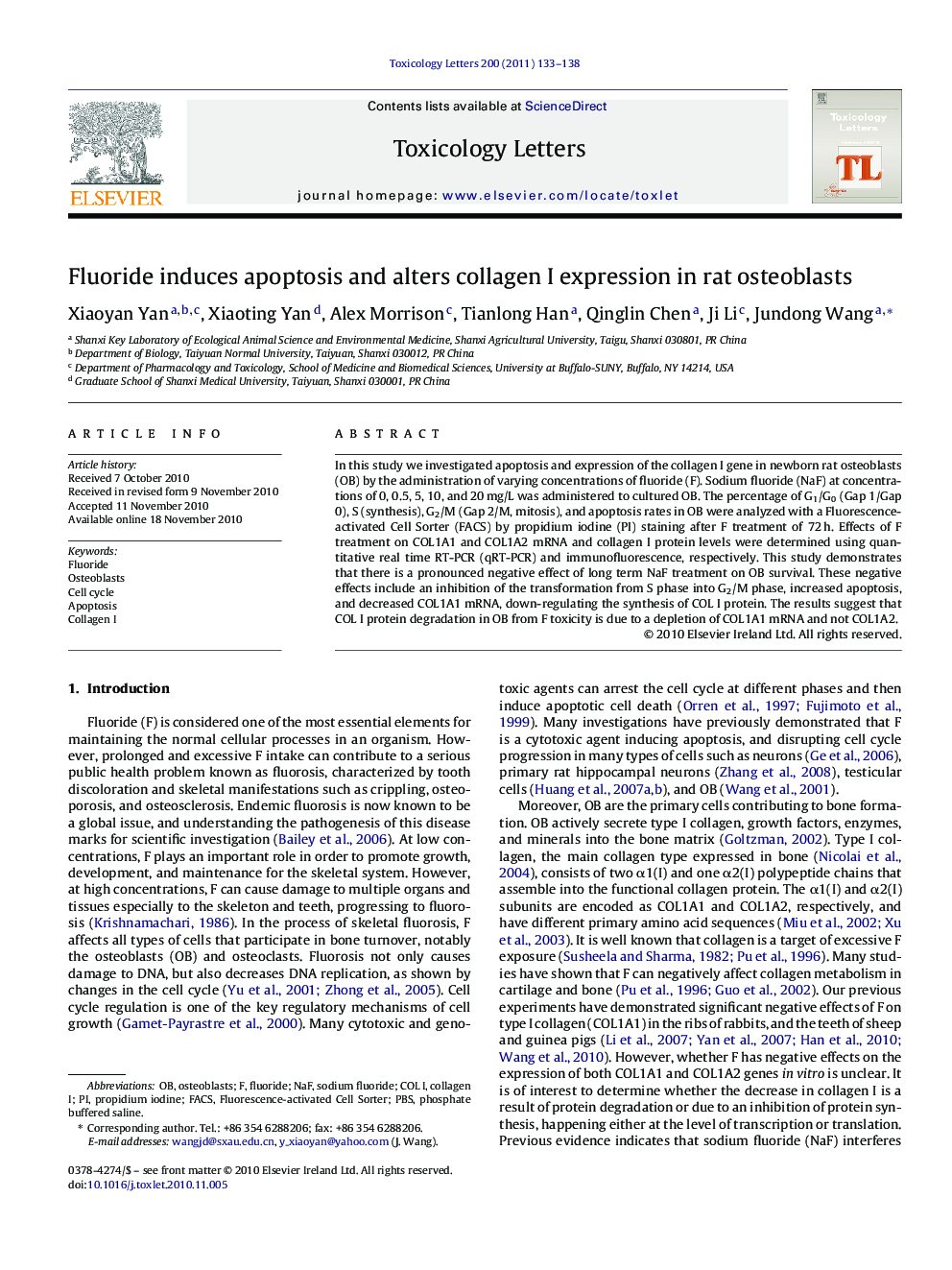| Article ID | Journal | Published Year | Pages | File Type |
|---|---|---|---|---|
| 2600385 | Toxicology Letters | 2011 | 6 Pages |
In this study we investigated apoptosis and expression of the collagen I gene in newborn rat osteoblasts (OB) by the administration of varying concentrations of fluoride (F). Sodium fluoride (NaF) at concentrations of 0, 0.5, 5, 10, and 20 mg/L was administered to cultured OB. The percentage of G1/G0 (Gap 1/Gap 0), S (synthesis), G2/M (Gap 2/M, mitosis), and apoptosis rates in OB were analyzed with a Fluorescence-activated Cell Sorter (FACS) by propidium iodine (PI) staining after F treatment of 72 h. Effects of F treatment on COL1A1 and COL1A2 mRNA and collagen I protein levels were determined using quantitative real time RT-PCR (qRT-PCR) and immunofluorescence, respectively. This study demonstrates that there is a pronounced negative effect of long term NaF treatment on OB survival. These negative effects include an inhibition of the transformation from S phase into G2/M phase, increased apoptosis, and decreased COL1A1 mRNA, down-regulating the synthesis of COL I protein. The results suggest that COL I protein degradation in OB from F toxicity is due to a depletion of COL1A1 mRNA and not COL1A2.
